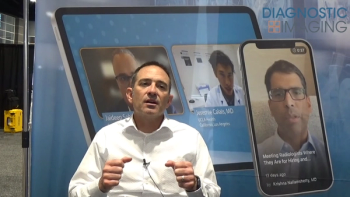
Post-Op MRI Shows New Ischemic Brain Lesions in 65 Percent of Patients After Endovascular Surgery for Intracranial Atherosclerotic Stenosis
In the study of 119 patients who had endovascular treatment for intracranial atherosclerotic stenosis, multivariable analysis revealed that post-op ischemic brain lesions on diffusion-weighted magnetic resonance imaging (MRI) were 3.6 times more likely to occur in patients who smoke cigarettes and 2.9 times more likely in patients who had multiple operative attempts.
Sixty-five percent of patients who have endovascular treatment for intracranial atherosclerotic stenosis may develop new ischemic brain lesions after surgery, according to diffusion-weighted magnetic resonance imaging (MRI) findings from a new study.
For the study, recently published in
Post-op MRI scans showed new ischemic brain lesions in 77 patients (65 percent) with 72 patients (61 percent) having lesions in the area of the treated artery, 41 patients (35 percent) with lesions beyond the territory of the treated artery and 58 patients (75 percent) having lesions in peripheral brain areas.
“Most of the new ischemic brain lesions in our study were involved in cortical or subjacent white matter areas. This may suggest that embolism seems to be the main underlying mechanism of new lesions,” wrote Ning Ma, M.D., who is affiliated with the Department of Interventional Neuroradiology at Beijing Tiantan Hospital at Capital Medical University in China, and colleagues.
“Embolism may be caused by the dislodgement of atheroma, in situ thrombosis, or microbubbles during the endovascular treatment. … In addition to the embolism mechanism, new lesions in the perforator territory may be caused by the forceful displacement of atheroma into the perforator ostia (ie. snow plow effect) or in situ focal thrombosis secondary to intracranial balloon angioplasty and/or stent placement.”
(Editor’s note: For related content, see “
The researchers noted that multivariable analysis showed that cigarette smoking was 3.6 times more likely and multiple surgical attempts were 2.9 times more likely to lead to post-op ischemic brain lesions in the study cohort.
“Cigarette smoking increases the risk of plaque vulnerability, which may be the underlying reason for the higher frequency of new ischemic brain lesions in the participants with cigarette smoking after endovascular treatment,” noted Ma and colleagues. “The culprit arterial lesions may be more susceptible to plaque rupture and in situ thrombus formation when there have been multiple attempts at endovascular treatment.”
The study authors noted no difference in new lesion frequency between patients treated with balloon angioplasty (60 percent) and those who received stents (71 percent).
Acknowledging the limitations of data drawn from a small sample size in a homogenous ethic population at one institution, the study authors also noted there was no comparison of the characteristics of patients who had new symptomatic ischemic brain lesions and those who had asymptomatic brain lesions. Ma and colleagues conceded a lack of assessment of the association between operative attempts and symptomatic ischemic stroke.
Newsletter
Stay at the forefront of radiology with the Diagnostic Imaging newsletter, delivering the latest news, clinical insights, and imaging advancements for today’s radiologists.




























